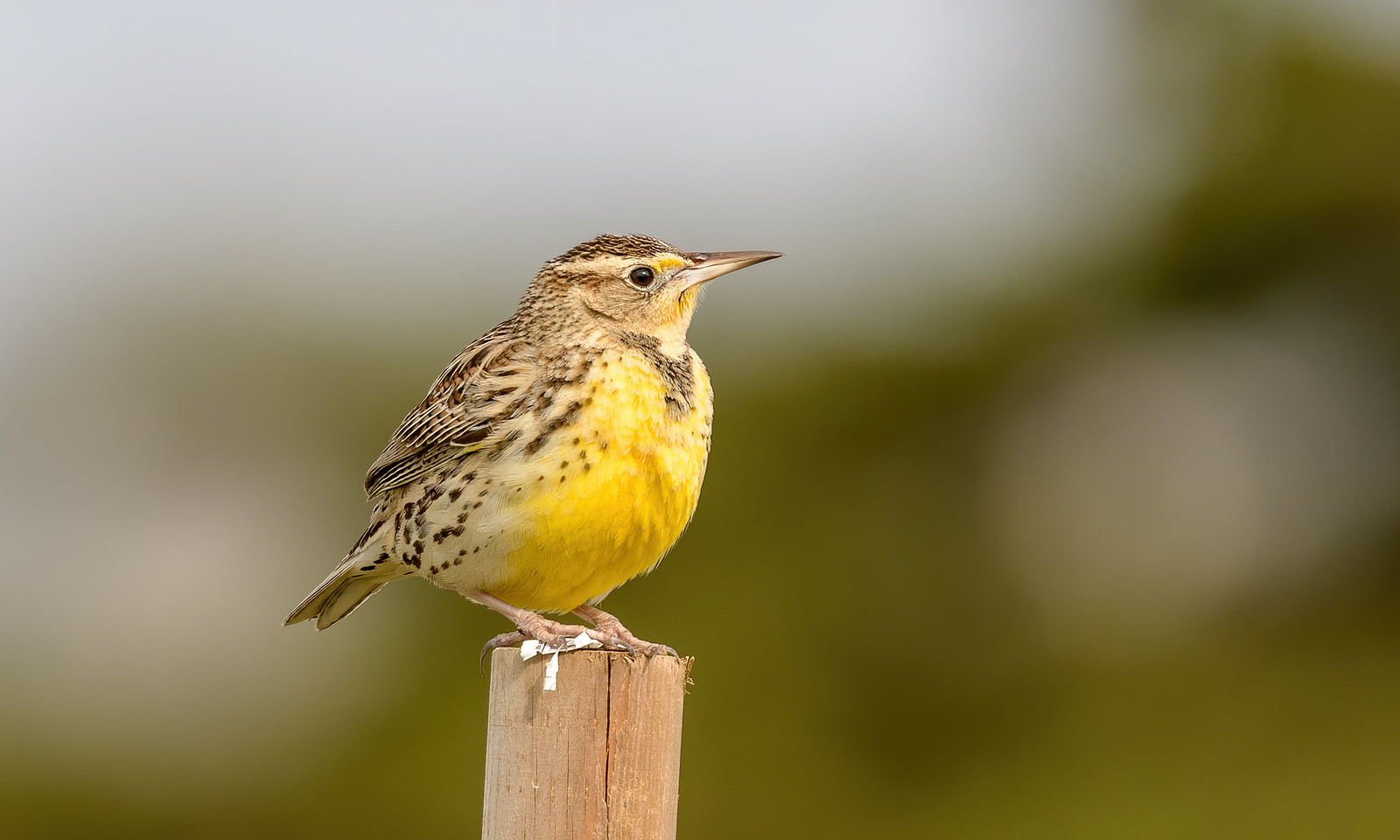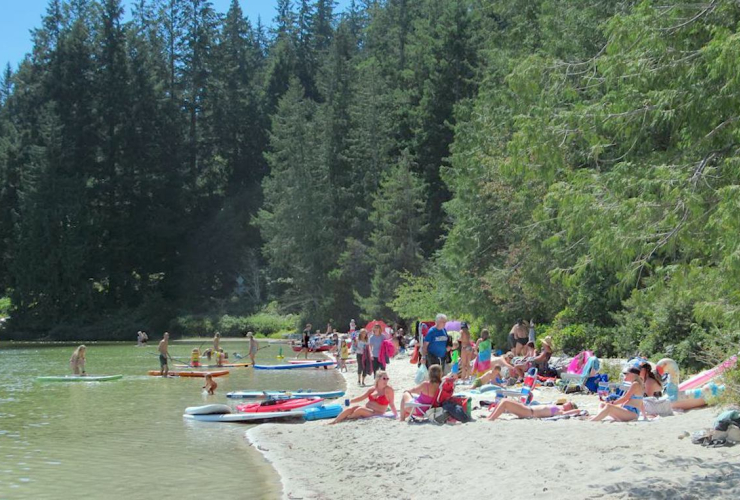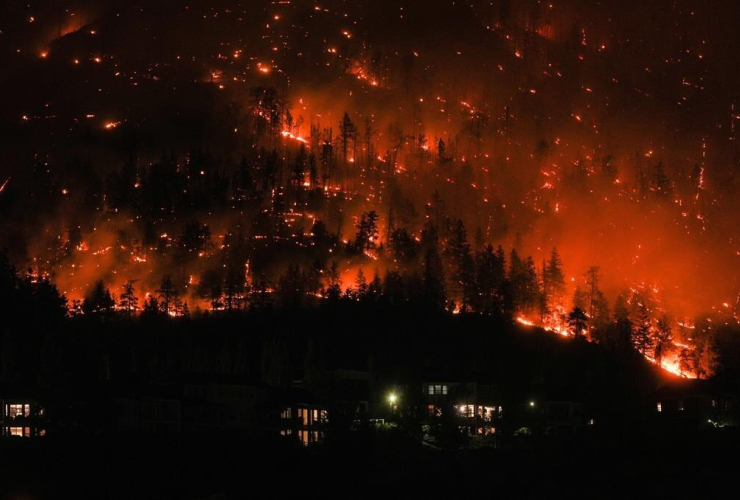This story was originally published by Inside Climate News and appears here as part of the Climate Desk collaboration.
The struggle to meet a growing global energy demand is playing out across North Dakota’s landscape. On the western half of the state, oil and gas wells dot the Bakken shale and farmers swap small grains, such as wheat, barley and oats, traditionally grown in the region, for corn and soybeans used as biofuel feedstocks.
These landscape changes across grassland regions like those in North Dakota affect local wildlife and ecosystems. A recent study in Ecological Applications shows that between expansions of oil and gas development and the growth of biofuels in the state, grassland birds had more negative responses to all the new fields of corn and soybeans.
Scientists regard bird populations as indicators of ecosystem health. In recent years, grassland birds have experienced the largest loss out of any avian population. As energy needs continue to rise across the world, the new research by scientists at the U.S. Geological Survey’s Northern Prairie Wildlife Research Center in Jamestown, N.D., highlights the tradeoffs between different types of energy production.
Christine Ribic, a professor emeritus at the University of Wisconsin who was not involved in the study, said this paper is the first time researchers looked at both the expansion of oil and gas drilling and farmers’ transition to corn and soybeans as threats to grassland birds in order to “understand which one is more important than the other.”
Corn and soybean fields not good habitats
The researchers involved in the study used data from the Breeding Bird Survey, a long-term monitoring program run by the US Geological Survey’s Eastern Ecological Science Center and Environment Canada’s Canadian Wildlife Service that tracks trends in North American bird populations. To conduct the survey, every summer volunteers drive 25-mile routes just after sunrise and stop every half a mile to count the number of birds. This data, which goes back to 1966, is available on a public database.
There were four grassland birds that researchers chose to examine in this study, including North Dakota’s state bird, the western meadowlark. These birds are abundant enough that researchers could effectively integrate their count data into the study modelling.
“These are species that we’ve just heard anecdotally of people talking about a lot,” said Max Post van der Burg, a researcher at the U.S. Geological Survey and lead author on the study. “You talk to both farmers and scientists and wildlife managers in this neck of the woods and they’re like, ‘Yeah, we just don’t see as many western meadowlarks on fence posts singing in the spring and the summer.”
Researchers had been intuitively aware of land use changes in North Dakota for a while. In order to relate information on the amount of birds at a given site to land use data, they used publicly available cropland data from the National Agricultural Statistics Service as well as a dataset on oil and gas wells from the state.
When volunteers count birds for the breeding bird survey, their counts correspond to a broad area and often miss which parts the birds are actually using. So using “pixels” of about 900 square metres, researchers modelled the likelihood that one of the bird species used that pixel and what the land use was — oil and gas development, farming with wheat, barley and oats, or the new corn and soybeans.
Researchers found that generally birds had the largest negative response, meaning fewer birds in an area, to corn and soybeans, when compared to the presence of birds on land being used for oil and gas development. Only one out of the four bird species, the savannah sparrow, had a negative response to oil and gas development, though it was less pronounced than its response to corn and soybeans.
Post van der Burg said that part of the reason birds respond less negatively to oil and gas development is because it takes up less physical space than agriculture. But Ribic pointed out that while soybeans and corn affect the quantity of grassland bird habitat, oil and gas affect habitat quality. Indirect effects of oil development, such as noise pollution, can also negatively impact avian species in the area.
Then researchers decided to examine the difference between birds’ responses to corn and soybeans versus the smaller grains traditionally grown in the state. Compared to areas with small grains, birds weren’t found as often in areas with corn and soybeans.
“These cornfields are essentially just like ecological deserts for these particular species of birds,” Post van der Burg said. “There’s some evidence to suggest that that’s the case for biodiversity writ large as well. The finding that was kind of surprising to us was that it isn’t just agriculture, it’s the kind of agriculture that seems to be driving these declines.”
Other research indicates that small grains can physically mimic the grassland vegetation that birds are used to nesting in. The timing of seasonal events in grasslands and small grain fields is also similar, so birds can also use those fields during nesting season.
Impact of the Renewable Fuel Standard
It’s difficult to directly attribute the rise in corn and ethanol cultivation across North Dakota to biofuels, Post van der Burg said. The information about where corn and soybeans go after they are harvested isn’t publicly available and there is no consolidated federal program to track land conversion related to the Renewable Fuel Standard, a national policy created in 2005 that sets requirements on the amount of renewable fuel that must be blended into the nation’s total fuel supply.
But research has generally attributed the rise in demand for corn and soybeans in North Dakota to the Renewable Fuel Standard.
As corn and soybeans expanded into the state in the early 2000s, North Dakota’s ethanol refinery capacity also increased. Previous analysis indicates that the enactment of RFS and the subsequent higher ethanol requirements led to grassland loss in the Great Plains, especially when close to ethanol refineries. To date, approximately half of North Dakota’s corn crop goes to ethanol production.
The RFS also increases prices for corn, creating an economic incentive for further land use changes. Ribic said that this process drove farmers to take their lands in the Conservation Reserve Program, a federal project that pays farmers to take their land out of agricultural production, and plant corn.
“They’re able to make a profit,” Ribic said. “So we have tension between economics and the environment.”
While biofuels are often considered an environmentally friendly source of energy, Post van der Burg said this paper shows they are still capable of impacting the ecosystem in ways many conservationists would consider harmful to nature.
“And I guess my hope would be that people take work like this and they fold that into their thinking about the potential tradeoffs between extracting energy and preserving the environment,” Post van der Burg said.
Can meadowland songbirds even
Can meadowland songbirds even *eat* corn or soy?
I'd be surprised if the applications of tremendous amounts of glyphosate, and doubtless pesticides of several sorts, aren't toxic to little birds.
Biofuel from food crops likely causes food shortages for countries in which they are staples.
Remember the Caribbean women mixing their corn flour with a white mineral powder, to be able to fill their kids' tummies a decade or so ago??? Maybe it's longer; I'm not good at dates of things that didn't happen around me, as I have no personal reference points to associate the events with.
I wonder what the distinction
I wonder what the distinction is between corn or soy on one hand and those other grains on the other, when it comes to how much and what sorts of pesticide and herbicide are used? And for that matter, which is more likely to be GM produce (which would be likely to indirectly affect herbicide use--"roundup ready" and all that).
Gotta admit, drilling for oil on a piece of territory may mess it up in some ways (and has broader implications climate-change-wise that are very bad) but at least they're not going to be dousing the place in pesticides nearly as much.
As seen in the photograph
As seen in the photograph headlining this article, the birds' tiny beaks can hardly handle a large seed like a soybean or a kernel of corn. So one needs to proceed no further with any efforts to distinguish between the grains mentioned. Then it's a no-brainer that anything that humans do to disrupt the ecosystem these creatures depend on - whether it be from changing the crops grown by small farmers, or digging up subterranean fossil fuels - ends up damaging said ecosystems, to the ultimate detriment - and extinction - of said creatures!






Comments